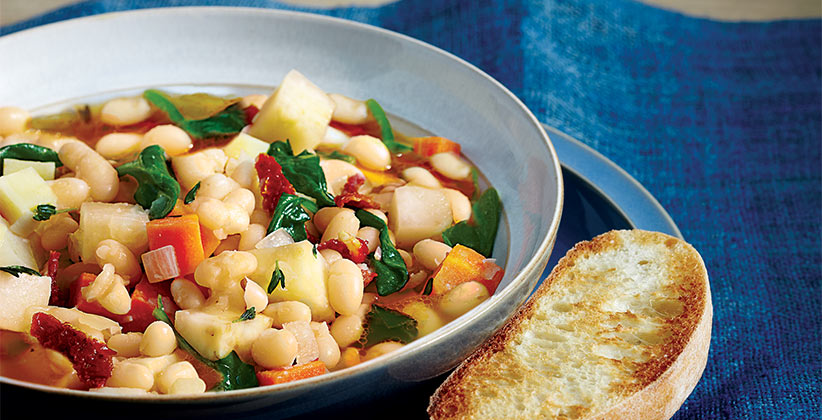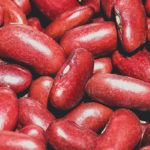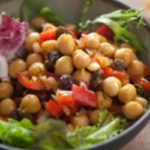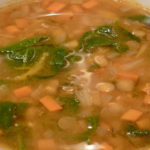 Pulses and legumes otherwise known as peas, beans and lentils are incredibly versatile. They soak up flavours beautifully and they introduce into your diet lots of fibre, protein, vitamins and minerals. They don’t however break the bank and are incredibly easy to cook and prepare. From chickpeas to soybeans, these lovely legumes add some personality into your diet and they are found at the very centre of many world cuisines that you and your family can try.
Pulses and legumes otherwise known as peas, beans and lentils are incredibly versatile. They soak up flavours beautifully and they introduce into your diet lots of fibre, protein, vitamins and minerals. They don’t however break the bank and are incredibly easy to cook and prepare. From chickpeas to soybeans, these lovely legumes add some personality into your diet and they are found at the very centre of many world cuisines that you and your family can try.
Pulses are legumes or plants that have a pod produced from flowers. Inside the pods are peas, beans, soybeans, peanuts and lentils. These are essentially edible seeds and they are called pulses. These pulses come in a variety of shapes, sizes, and colours however; the most common types are chickpeas, yellow or green peas (split peas, where the pea splits naturally upon drying)lentils and beans.
There are many uses for these pulses. They can be purchased whole, split, dried, canned or even ground into flours. Because of their high protein, mineral and fibre levels, they are broken down into these categories and then added to non-dairy milks, vegan foods, cereals, granola bars, meat replacements and thickeners. .
Canada is the world’s leading exporter of lentils and peas, and one of the top five exporters of beans, selling to more than 150 different countries. Saskatchewan is the pulse-growing centre of Canada and has done a great deal of work with pulses to help familiarize the Canadian public with recipes and information.
Pulses Pack a Powerful Punch!
Recent studies have proved that a healthy diet should include meat alternatives like lentils, beans, and all manner of pulses. With their extremely high levels of protein, low levels of fat and great sources of vitamins and minerals pulses do pack a very powerful nutritional punch. Black beans for example have 16 grams of protein in one cup along with 8 grams of fibre, 48 mg of calcium and 256 mcg of folate which is normally only found in leafy green vegetables.
In addition to adding very healthy minerals and vitamins to your diet, pulses may help reduce LDL, which is the ‘bad’ cholesterol that clogs your arteries and help build up good cholesterol.
COOKING & STORAGE TIPS
There has been an argument ongoing for several years as to whether or not beans actually need to be soaked. Several of the Bean Boards have done testing and it’s really a case of if you do soak your beans you may reduce the cooking time a little so the choice is really up to you. The soaking time or the extended cooking time has made little to no difference in the digestive aspect of consuming beans.
Most beans are presoaked to help reduce cooking time however; lentils and split peas do not require any soaking. The ratio of beans to water for soaking should be around 3 cups of clean fresh cold water to 1 cup of the beans. Make sure you pick over the beans before soaking to remove any tiny stones and give them a good rinse under the cold tap. Then pour the cleaned beans into the soaking water, cover and let stand for around 12 hours or overnight. The next day drain the beans and cover with fresh cold water and place on the stove. Bring the water to a boil and then reduce to a simmer covered with a lid for around 2 hours until the beans are soft and tender
Cooking times will vary, and depend greatly on the size of the bean and how long it has been dried for. You should expect it to take from one to three hours to cook the beans. Pulses like lentils will take much less time and do not require any soaking time they can simply be added to the dish whilst cooking. Always check on the liquid level when cooking as some beans can absorb more liquids than others. .
When your beans or lentils are cooked don’t keep them at room temperature any longer than 2 hours. You can cover them and keep them refrigerated for up to three days, or simply freeze them and they will keep for several months. A great idea is to freeze the same quantity of beans that you would find in one can and then you have a quick measure for your recipes.
Salt appears to impact the texture of beans so there is a school of thought that says no salt as it toughens the beans skins and makes them harder. The newer school of thought is that the salt actually tenderizes the skins making the beans softer and creamier. You could always do your own test to see which you prefer.
A great way to add deep flavour to your dish whether you are using beans as an ingredient or the main item is to add spices and herbs to the cooking liquid. This allows the beans to soak up the flavours and adds a new dimension to your recipes.
Dried vs. Canned Here’s a rough estimate of how many dried beans you’ll need for a recipe that calls for canned and vice versa.
Dried Cooked Canned
2/3 cup (150 ml) dried beans 2 cups (500 ml) cooked beans 1 (540 ml/19 oz) can beans
Beans, peas, lentils and all dried pulses and legumes will keep up to one year when stored in an airtight container and kept in a cool dark cupboard. They do have expiration dates on the packaging and are usually good up to the one-year mark.
Add pulses to your diet today!
If you are looking for a Canadian pulse exporter or for more information about lentils, give us a call at +1 (416) 548-5901
Extracted from: http://betterfoodforall.sobeys.com/article/cooking-skills/pulses-101-your-guide-to-beans-peas-and-lentils/




Comments are closed.